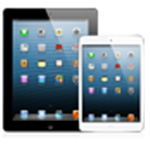by Kimberly Kimbell-Lopez
 If you want to begin using educational apps (short for applications) to supplement your classroom instruction, then the selection task can definitely be overwhelming. You need either an iPad, iPhone, iTouch, Droid, tablet, or other similar device. It is relatively easy to download apps to your device by accessing the Apple App Store in iTunes. When you sync your device with iTunes, then the new apps you selected are automatically downloaded. There are thousands of apps that can be downloaded using the Apple App store with the prices ranging from free up to five dollars or more. Many of the apps can also be used with multiple devices.
If you want to begin using educational apps (short for applications) to supplement your classroom instruction, then the selection task can definitely be overwhelming. You need either an iPad, iPhone, iTouch, Droid, tablet, or other similar device. It is relatively easy to download apps to your device by accessing the Apple App Store in iTunes. When you sync your device with iTunes, then the new apps you selected are automatically downloaded. There are thousands of apps that can be downloaded using the Apple App store with the prices ranging from free up to five dollars or more. Many of the apps can also be used with multiple devices.
If you are trying to make more books available for your students, then iBooks can be used to download classical works all the way to contemporary stories. The benefits of using iBooks or other eReader is that students can adjust the print size to make the text easier to read, they can click on words to get help with meaning, and they can add notes or highlights to emphasize key information. Do you want to access books at no cost? Free Books is an app that makes available 23,469 free books and documents from the public domain.
Keynote and Pages are great apps to use for authoring journal entries, stories, poetry, and other texts. General storytelling apps that students will have fun exploring include Build a Story, Storyrobe, and Strip Design. Are you interested in apps to support sight word instruction? Popular programs include K-3 Sight Words, Play Sight Words, Sight Words, and Smiley Sight Words. Are you more interested in apps that develop vocabulary? Your students can try out Montessori Crosswords, Opposite Ocean, Same Meaning Magic, Same Sound SpellBound, The Opposites, and SAT Vocab Cards. Working on parts of speech? Try MadLibs and Word Sorts.
Harmon (2012) states that “no other pedagogical tool or technique in my experience engages students in a way that makes learning fun and leaves students feeling like they are in control of their own learning” (p. 30). However, as the transition is made into using innovative technology resources, we have to carefully consider how a particular app can enhance or supplement instruction. We should not simply use apps as babysitters, but instead use the Apps with a specific plan in mind, (e.g., practice a skill, access information, or create a product) (Hertz, 2012).
If you have something specific in mind you need for your classroom, then there really is probably an app for that. Get started today exploring the world of apps!
References
Harmon, J. (2012). Unlock literacy with iPads. Learning & Leading with Technology, 39, pp. 30-31.
Hertz, 2012. Apps in the elementary classroom. Edutopia. Retrieved October 26, 2012 from http://www.edutopia.org/blog/apps-elementary-classroom-mary-beth-hertz.
Kimberly Kimbell-Lopez, Ed.D., is the Hubberd H. & Velma Horton Boucher Endowed Professor in the Department of Curriculum, Instruction, and Leadership in the College of Education at Louisiana Tech University.
This article is part of a series from the International Reading Association Technology in Literacy Education Special Interest Group (TILE-SIG).